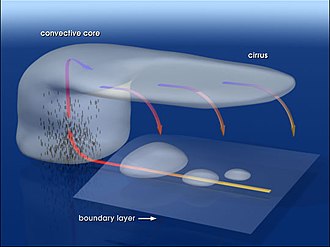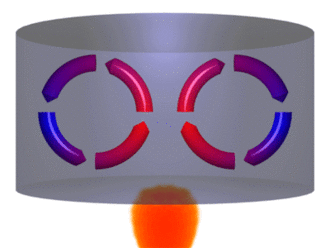Difference between revisions of "AY Honors/Weather/Answer Key/pt-br"
(Created page with "</noinclude> <!-- 4. Por que é possível haver chuva de um lado de uma montanha, e estar seco o outro lado? Dar uma ilustração em seu país ou região. -->") |
(Created page with "</noinclude> <!-- 6. O que causa os raios e trovões? Quais os tipos diferentes de raios existentes? -->") |
||
| Line 86: | Line 86: | ||
{{CloseReq}} <!-- 5 --> | {{CloseReq}} <!-- 5 --> | ||
{{ansreq|page={{#titleparts:{{PAGENAME}}|2|1}}|num=6}} | {{ansreq|page={{#titleparts:{{PAGENAME}}|2|1}}|num=6}} | ||
| − | <noinclude> | + | <noinclude></noinclude> |
| − | </noinclude> | + | <!-- 6. O que causa os raios e trovões? Quais os tipos diferentes de raios existentes? --> |
| − | <!-- 6. | ||
| − | |||
| − | |||
| − | |||
{{clear}} | {{clear}} | ||
Revision as of 14:23, 12 August 2021
Nível de Habilidade
1
Ano
1944
Version
20.12.2025
Autoridade de Aprovação
Conferência Geral
1
1a
1b
1c
1d
1e
1f
1g
2
3
4
- a. Por que é mais fresco e úmido nas montanhas, do que nos vales?
- b. De que direção geralmente vem a chuva e o tempo bom em sua região?
5
6
7
A rising body of air typically loses heat because it radiates heat. At some point the air becomes denser than the air underneath it, which is still rising. Since it cannot descend through the rising air, it moves to one side. At some distance its downward force overcomes the rising force beneath it and the air begins to descend. As it descends, it warms again through surface contact, conductivity, or compression, and the cycle repeats itself. (The heating through compression of descending air is what is responsible for such welcome winter phenomena as what is known in Western North America as a Chinook wind or in the Alps as a Föhn wind.)
8
Radar
A weather radar is a type of radar used to locate precipitation, calculate its motion, estimate its type (rain, snow, hail, etc.), and forecast its future position and intensity. Modern weather radars are mostly doppler radars, capable of detecting the motion of rain droplets in addition to intensity of the precipitation. Both types of data can be analyzed to determine the structure of storms and their potential to cause severe weather.
9
9a
9b
10
The water cycle is the continuous movement of water over, above, and beneath the Earth's surface. It is powered by solar energy, and because it is a cycle, there is no beginning or end. As water moves around in the hydrosphere, it changes state among liquid, vapour, and ice. The time taken for water to move from one place to another varies from seconds to thousands of years, and the amount of water stored in different parts of the hydrosphere ranges up to 1.37 billion km³, which is contained in the oceans. Despite continual movement within the hydrosphere, the total amount of water at any one time remains essentially constant.
11
Wind Vane
A simple wind vane can be made by fastening two sides of a strip of heavy paper around a short section of drinking straw. First, bend the strip in half. Place the straw in the bend and then glue the strip to itself. Drive a dowel, broom stick, or some similar item into the ground where you wish to measure the wind direction, and drive a finish nail into the top end. Then place the straw over the nail so that it may swing freely. When the wind blows, the vane (strip of paper and straw) will swivel on the nail indicating the wind direction.
12
- a. Temperatura
- b. Umidade (orvalho, neblina, chuva, geada ou neve)
- c. Formação de nuvens
- d. Direção do vento
You may need to call your Pathfinders every day to get them to do this. It may help to build the weather instruments from requirement 11 first to build some excitement about weather. It may also help to work on this honor during the season in your area that has the most extreme weather. You can download a tracking chart here and give one to each of your students. http://www.pathfindersonline.org/pdf/resources/weather_tracking_chart.pdf




